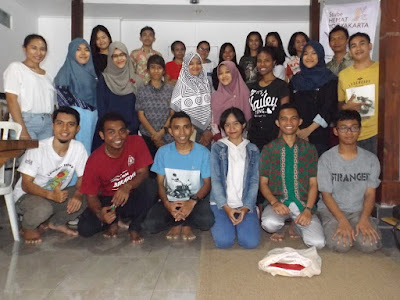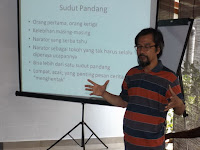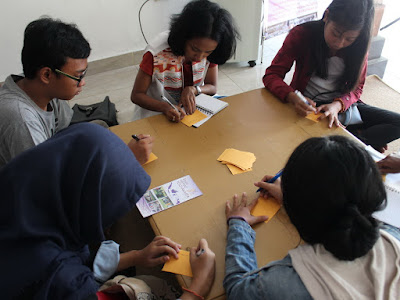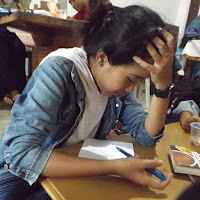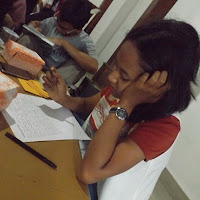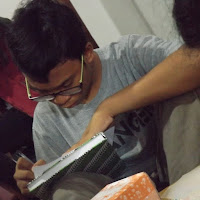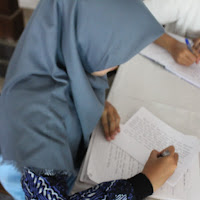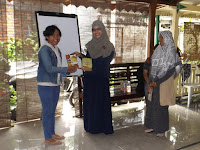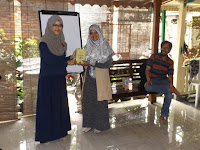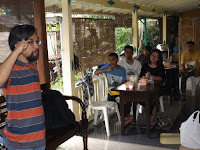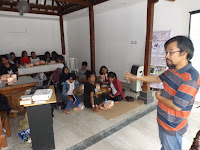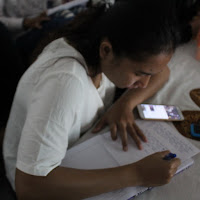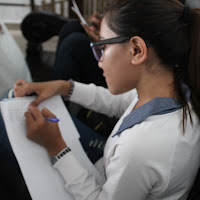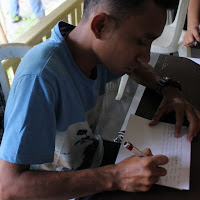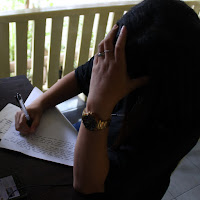Pursuing ideas and write!
Monday, 6 November 2017by adminstube
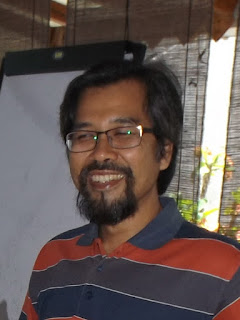 "Writing fiction is like digging a well with a needle. It is not easy anda hard work. He should have idea or inspiration, but he cannot just wait for the idea or inspiration but should seek and pursue ideas", said Achmad Munjid starting the Workshop on Writing Fiction, on Sunday, November 5, 2017 at Stube-HEMAT Yogyakarta secretariat. This was a collaboration between Stube-HEMAT Yogyakarta and team of Magister of Literature Science of Gadjah Mada University as a dedication program to community.
"Writing fiction is like digging a well with a needle. It is not easy anda hard work. He should have idea or inspiration, but he cannot just wait for the idea or inspiration but should seek and pursue ideas", said Achmad Munjid starting the Workshop on Writing Fiction, on Sunday, November 5, 2017 at Stube-HEMAT Yogyakarta secretariat. This was a collaboration between Stube-HEMAT Yogyakarta and team of Magister of Literature Science of Gadjah Mada University as a dedication program to community.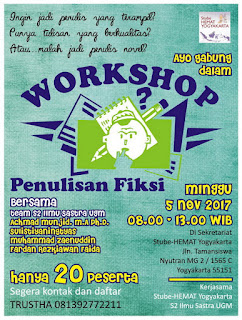 Twenty students from various campuses and regions studying in Yogyakarta and local youth as staffs of child-friendly village team attended a workshop facilitated by Achmad Munjid, M.A. Ph.D., a lecturer at Faculty of Cultural Sciences UGM, along with him wereSulistyaningtyas, Muhammad Zaenuddin and Fardan Rezkiawan Faida. Three of them were students of Magister in Literature of UGM. The facilitator felt so glad to meet participants of Stube-HEMAT Yogyakarta and appreciated Stube’s fast response to prepare the activity well although in short time and students' enthusiasm to learn how to write fiction. It was said that writing was like sport and alms. Everyone knows that these two things are good, but not everyone wants to do it. People know that writing is good, but how much effort really done by them. Writing is like riding a bike, playing a guitar or swimming, not just knowing the theory but it needs regular practice.
Twenty students from various campuses and regions studying in Yogyakarta and local youth as staffs of child-friendly village team attended a workshop facilitated by Achmad Munjid, M.A. Ph.D., a lecturer at Faculty of Cultural Sciences UGM, along with him wereSulistyaningtyas, Muhammad Zaenuddin and Fardan Rezkiawan Faida. Three of them were students of Magister in Literature of UGM. The facilitator felt so glad to meet participants of Stube-HEMAT Yogyakarta and appreciated Stube’s fast response to prepare the activity well although in short time and students' enthusiasm to learn how to write fiction. It was said that writing was like sport and alms. Everyone knows that these two things are good, but not everyone wants to do it. People know that writing is good, but how much effort really done by them. Writing is like riding a bike, playing a guitar or swimming, not just knowing the theory but it needs regular practice.
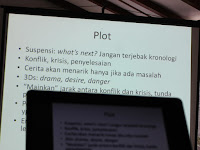 Further, there are some points noted in writing fiction,first, the story is an event that 'disturb' thoughts, conflicts, dilemmas or irregularities that occur.Second, the plot, the story contains conflicts, crises and solutions, which include 3D, drama (something attractive), desire and danger (something challenging). In this section the author needs to 'play' distance between conflict, crisis and solving, so that the reader is curious about the story. Third, related with characterization, there is keyword 'seeing is believing' that the writer should be able to present the character in the fiction story clearly so that the reader feel the real interaction with the character. Fourth, point of view of the story, the first person or third person. Each has its own advantages. Fifth, the background of the story correlates with time and place of story. It should be specific, real and historical so the reader feels something real and engages in the story although it is just fiction. Finally, the opening and closing, the author can make the opening and closing of the story gradually or shocking the readers for the effectiveness when delivering messages of ther story. Sometimes the ending of the story is a 'disturbing' ending that keeps the reader thinking about the story.
Further, there are some points noted in writing fiction,first, the story is an event that 'disturb' thoughts, conflicts, dilemmas or irregularities that occur.Second, the plot, the story contains conflicts, crises and solutions, which include 3D, drama (something attractive), desire and danger (something challenging). In this section the author needs to 'play' distance between conflict, crisis and solving, so that the reader is curious about the story. Third, related with characterization, there is keyword 'seeing is believing' that the writer should be able to present the character in the fiction story clearly so that the reader feel the real interaction with the character. Fourth, point of view of the story, the first person or third person. Each has its own advantages. Fifth, the background of the story correlates with time and place of story. It should be specific, real and historical so the reader feels something real and engages in the story although it is just fiction. Finally, the opening and closing, the author can make the opening and closing of the story gradually or shocking the readers for the effectiveness when delivering messages of ther story. Sometimes the ending of the story is a 'disturbing' ending that keeps the reader thinking about the story.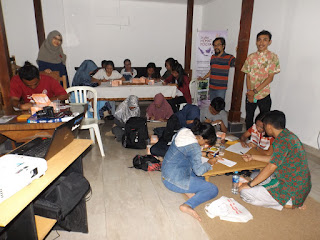 In the next session the participants practiced writing fiction. They beganto imagine an idea or inspiration, then writing the opening of a fictional story. There were some participants who wrote stories that were able to provoke the reader's curiosity, such as Anggita Getza's writing about the mystical incident and David Pamerean about the explosion in outer space.
In the next session the participants practiced writing fiction. They beganto imagine an idea or inspiration, then writing the opening of a fictional story. There were some participants who wrote stories that were able to provoke the reader's curiosity, such as Anggita Getza's writing about the mystical incident and David Pamerean about the explosion in outer space.
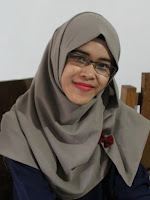 At the end of the event, Sulistyaningtyas, a young writer known as Tyas Effendi, who wrote several books, such as ‘Tentang Waktu’, ‘Catatan Musim’, ‘Life After You’ and ‘Dance for Two’ gave her books to lucky participants as appreciations. She also shared her writing experience with her perseverence to write and learn, smart to choosetrending theme for readers and learn the characteristic of publishers.
At the end of the event, Sulistyaningtyas, a young writer known as Tyas Effendi, who wrote several books, such as ‘Tentang Waktu’, ‘Catatan Musim’, ‘Life After You’ and ‘Dance for Two’ gave her books to lucky participants as appreciations. She also shared her writing experience with her perseverence to write and learn, smart to choosetrending theme for readers and learn the characteristic of publishers.
The ability to write fiction is a learning process, it needs to be continuously trained from now on. So, let us ignite motivation, pursue ideas and write. Make your fiction writing as an inspiration that enlightens reader. (TRU).
Web Archive
2025 (14) 2013 (20)
2012 (12)
2011 (2)
2010 (18)
Total: 482
Youtube Channel
Lebih baik diam dari pada Berbicara Tetapi tidak ada Yang Di pentingkan Dalam Bicaranya
-->
